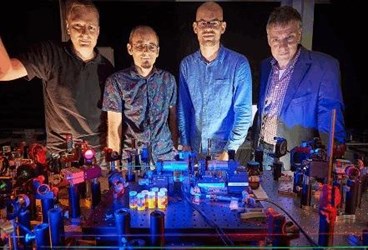'Optical Wells' For Photonic Bose-Einstein Condensate Enable Quantum Computing
By Jof Enriquez,
Follow me on Twitter @jofenriq

Researchers at the Institute of Applied Physics at the University of Bonn have devised a highly low-loss structure where photonic Bose-Einstein condensate flow through and in between so-called optical hollows or wells. This first-of-its kind structure could become an integral component in future quantum circuits.
A Bose-Einstein condensate – a state of matter in which separate atoms, cooled to near absolute zero, merge and act as a single atom or particle – was predicted by Albert Einstein in 1924, based on calculations by Satyendra Nath Bose. Bose-Einstein condensation of atomic gases and solid-state quasiparticles have been observed since the 1990s.
Yet, it was only in 2010 when Prof. Martin Weitz, a physicist from the University of Bonn, demonstrated for the first time that light particles can likewise coalesce into a "super-photon" inside an optical microcavity that is cooled sufficiently, which is key to minimizing errors in quantum information processing.
Seven years later, Prof. Weitz and his team used a new technique to cool a laser beam bouncing back and forth between two mirrors within a microcavity structure to produce Bose–Einstein condensation of light.
"The special thing is that we have built a kind of optical well in various forms, into which the Bose-Einstein condensate was able to flow," said Weitz, who co-wrote the study, "Variable potentials for thermalized light and coupled condensates," published in Nature Photonics.
The experimental microresonator features a special dye–polymer solution between the mirrors, which allowed the researchers to vary the path of the light, such that longer light wavelengths passed between the mirrors when heated. Also, the route can be extended if the polymer is heated through a thin layer.
"With the help of various temperature patterns, we were able to create different optical dents," reports Weitz.
One of these low-loss patterns included a hollow or well-shaped structure into which the photonic Bose-Einstein condensate flowed. Also, the super-photon tended to flow into adjacent wells when the light in the wells remained at a similar energy level.
"This was a precursor of optical quantum circuits," said Weitz. "Perhaps even complex arrangements, for which quantum entanglement occurs in interaction with a possible photon interaction in suitable materials, can be produced with this experimental setup."
Derived knowledge from the study will be used for the development of future lasers used in highly precise functions, such as welding, according to the researchers.
